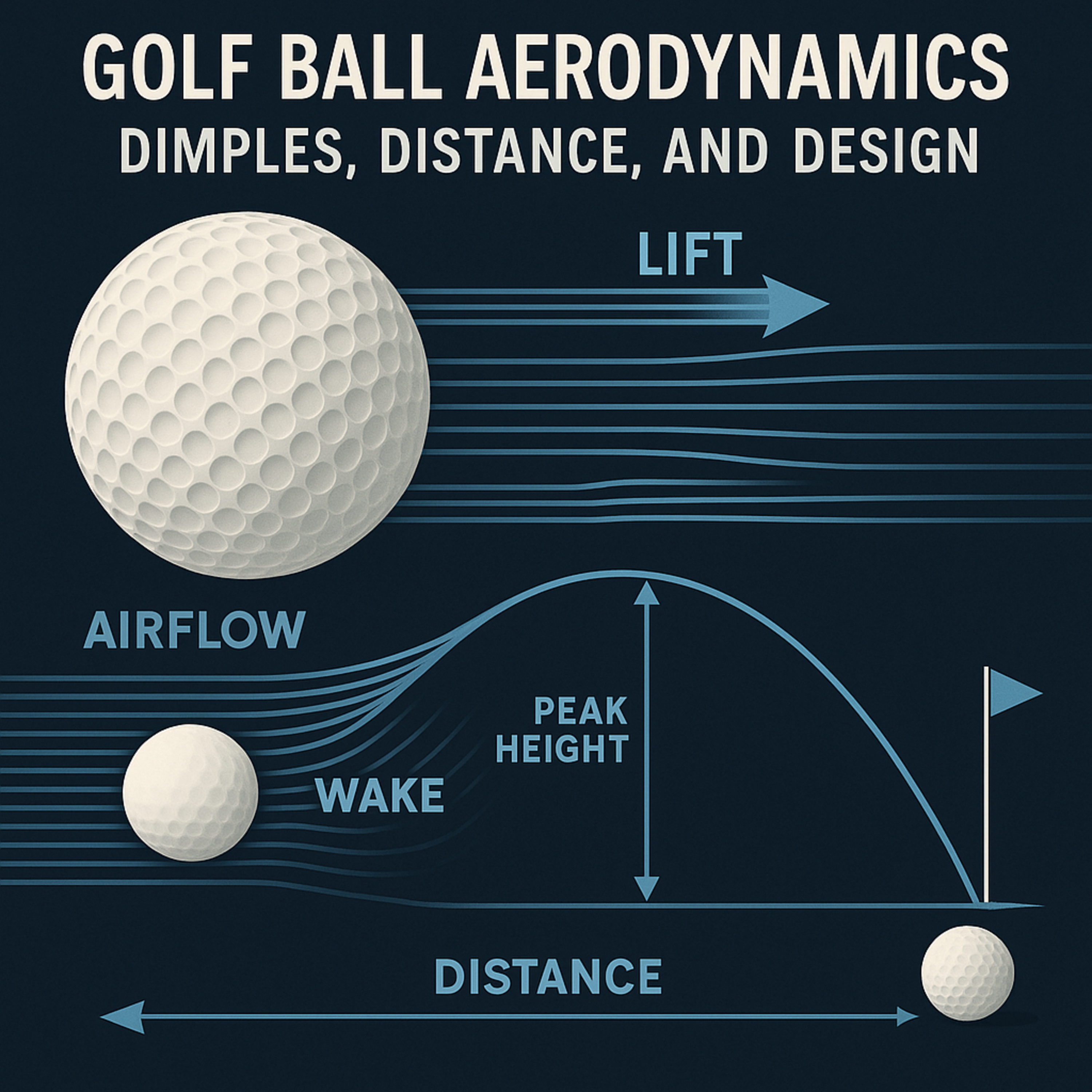#282 Dimples: Golf Ball Aerodynamics and Optimized Flight
- Author
- Golf247.eu
- Published
- Sat 12 Jul 2025
- Episode Link
- https://podcasters.spotify.com/pod/show/puttin-pro/episodes/282-Dimples-Golf-Ball-Aerodynamics-and-Optimized-Flight-e35eooh
How tiny details in ball design shape performance at the highest level
In golf, where every yard counts and ball flight consistency can determine a tournament’s outcome, it’s not just swing mechanics that matter—aerodynamics play a central role, and no feature is more vital than the humble dimple.
These small indentations are not aesthetic quirks; they’re aerodynamic tools that determine how a ball cuts through the air. Their presence reduces drag, increases lift, and turns a 130-yard drive into a 280-yard missile. But how exactly do they work—and why doesn’t every ball use the same pattern?
Two key forces act on a golf ball once it leaves the clubface: drag (air resistance that slows it down) and lift (the upward force generated mostly through backspin that keeps it airborne longer). On a smooth ball, airflow separates quickly from the surface, creating a large turbulent wake behind it, which increases drag and kills distance.
Dimples change everything. They introduce a thin turbulent boundary layer that clings longer to the ball’s surface, reducing the wake and thereby minimizing drag. Simultaneously, dimples help generate lift, especially under spin. The result? Remarkable gains in both carry and control.
This isn’t new science. In the 19th century, players noticed that battered balls with nicks and cuts flew better than smooth ones. Manufacturers soon began adding deliberate surface textures. Today, dimples are scientifically optimized—engineered using computational simulations, wind tunnel data, and thousands of real-world tests.
Why not just use the best pattern on every ball? Because there is no universal “best.” The ideal dimple design depends on the golfer, their swing speed, spin characteristics, and trajectory preferences. Engineers must carefully tailor ball aerodynamics to different playing profiles.
They adjust variables like dimple count, shape (circular, hexagonal, hybrid), depth, diameter, edge angle, and distribution. These factors influence launch angle, peak height, spin rate, and overall distance.
Among all variables, dimple depth is especially critical. Deeper dimples increase drag and lower ball flight; shallower ones reduce drag and send the ball higher. But both extremes reduce distance. Like adjusting the angle of a garden hose to hit the perfect range, designers fine-tune depth to find the ideal trajectory and carry.
Ball manufacturers create products for different golfer types—from tour pros to mid-handicappers. A tour ball might favor higher launch and lower spin for long irons, while an amateur’s ball might prioritize forgiveness and carry. The dimple pattern is customized accordingly to enhance performance under specific launch conditions.
Even similar-looking balls, like Pro V1 and Pro V1x, have distinct dimple profiles. While the Pro V1x flies higher with more spin, the Pro V1 has a lower, more penetrating flight. That difference is due not just to internal structure but to aerodynamic fingerprinting—the unique interaction between dimple design and airflow.
In golf, where millimeters at impact can translate to meters in the air, dimples make the difference. They are not just design features but precision tools, enabling engineers to shape trajectory, optimize carry, and tailor ball performance to every player’s game.
So next time you tee up, take a second look at those dimples—they’re doing more work than you think.
